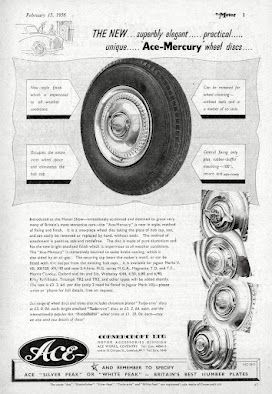Efficacy (pronounced ef-i-kuh-see)
(1) A capacity for producing a desired result or effect; effectiveness; an ability to produce a desired effect under ideal testing conditions.
(2) The quality of being successful in producing an intended result; effectiveness; a measure of the degree of ability to produce a desired effect.
1520-1530: From the Old French efficace (quality of being effectual, producing the desired effect), from the Late Latin efficācia (efficacy), from efficāx (powerful, effectual, efficient), genitive efficacis (powerful, effective), from stem of efficere (work out, accomplish). In eleventh century English, in much the same sense was efficace from the Old French eficace from the same Latin root efficācia; there was also the early fifteenth century efficacite from the Latin efficacitatem. The sixteenth century adjective efficacious (certain to have the desired effect) was often used of medicines (presumably a favorite of apothecaries), the construct being the Latin efficaci-, stem of efficax from the stem of efficere (work out, accomplish) + -ous. The –ous suffix was from the Middle English -ous, from the Old French –ous & -eux, from the Latin -ōsus (full, full of); a doublet of -ose in an unstressed position. It was used to form adjectives from nouns, to denote possession or presence of a quality in any degree, commonly in abundance. In chemistry, it has a specific technical application, used in the nomenclature to name chemical compounds in which a specified chemical element has a lower oxidation number than in the equivalent compound whose name ends in the suffix -ic. For example, sulphuric acid (H2SO4) has more oxygen atoms per molecule than sulphurous acid (H2SO3). The noun inefficacy (want of force or virtue to produce the desired effect) dates from the 1610s, from the Late Latin inefficacia, from inefficacem (nominative inefficax), the construct being in- (not, opposite of) + efficax.
The most familiar related form in modern use is efficacious but in general use this is often used in a more nuanced way than the pass/fail dichotomy of "efficacy" familiar in medical trials. In general use, efficacious is a "spectrum word" which describes degrees of the ameliorative effects of treatments although while the comparative is "more efficacious", a more common form is "quite efficacious"; the superlative "most efficacious" appears to be popular among the small subset of the population who use efficacious at all. Efficacy, efficacity & efficaciousness are nouns, effectuate is a verb, effectual & efficacious are adjectives and efficaciously is an adverb; the noun plural is efficacies.
Clinical trials in the pharmaceutical industry
In the development of vaccines (and medicinal drugs in general), efficacy trials (sometimes called phase III or explanatory trials) determine the percentage reduction of disease in a vaccinated group of people compared to an unvaccinated group, under the most favorable conditions, which is with the subjects housed in a hospital equipped to handle intensive care patients. Conducted on human subjects if tests on animals proved satisfactory, it’s a purely clinical exercise, practiced since 1915 and can be done as a double-blind, randomized study if no safety concerns exist. One potentially distorting aspect of both efficacy and (particularly) safety trials is a historic bias towards healthy young males as the subjects. The antonym of the adjective efficacious is inefficacious but the word is rarely used when drug trials produce unsatisfactory results: the punchier "failed" is almost always used. Under normal circumstances, the testing process can take many years, the industry usually referring to trials as phases:
Phase I: Safety Trial
Phase I trials are done to test a new biomedical intervention for the first time in a small group of people (typically 20-100) to evaluate safety. Essentially, this determines the safe dosage range and identifies side effects.
Phase II: Efficacy Trial
Phase II trials are done to study an intervention in a larger group of people (several hundred or more depending on the product) to determine efficacy (ie whether it works as intended) and further to evaluate safety.
Phase III: Clinical Study
Phase III studies are done to study the efficacy of an intervention in large groups of trial participants (often thousands) by comparing the intervention to other standard or experimental interventions (or to non-interventional standard care). Phase III studies are also used to monitor adverse effects and to collect information that will allow the intervention to be used safely.
Phase IV: Efficiency Study
Phase IV studies are done after the drug has been released and is being prescribed. These studies are designed to monitor the effectiveness of the approved intervention in the general population and to collect information about any adverse effects associated with widespread use over longer periods of time. They may also be used to investigate the potential use of the intervention in a different condition, or in combination with other therapies.
Proven efficacy: Adderall.
Adderall
and Mydayis are trade names for a combination drug called mixed amphetamine
salts (a mix of four salts of amphetamine).
In all Western jurisdictions Belonging to a class of drugs known as
stimulants, Adderall is a prescription medication and it contains two active
ingredients: the amphetamines and dextroamphetamine. As a prescribed medicine, primarily Adderall
is used in the treatment of attention deficit hyperactivity disorder (ADHD), a neurobehavioral
disorder characterized by symptoms such as inattention, hyperactivity, and
impulsivity. Adderall works by
increasing the levels of certain neurotransmitters (most critically dopamine
and norepinephrine) in the brain, these both mechanisms which play some role in
regulating attention, focus, and impulse control. Beyond ADHD, Adderall is sometimes prescribed
off-label for the treatment of narcolepsy, a sleep disorder characterized by
excessive daytime sleepiness and sudden, unpredictable episodes of sleep.
Adderall
also has something of a cult following among those who seek to experience some
of its more desirable side-effects. Like
many of the earlier amphetamines (most famously Tenuate Dospan (diethylpropion or
amfepramone) an appetite suppressant of legendary efficacy), Adderall can
assist in weight-loss and can safely be used for this by most people but
because of its potential for dependence, it should be taken (for whatever
purpose) only under clinical supervision.
For those prescribed Adderall, in some circumstances, it may continue to
be taken (at the prescribed level) even if one is in a substance rehabilitation
facility as was the case in 2013 when Lindsay Lohan completed a 48-hour drug
detox at the Betty Ford Clinic in Indio, California. Ms Lohan was prescribed Adderall after being
diagnosed with ADHD but the standard protocol used by rehab clinics is that doctors
routinely re-evaluate (1) the ADHA diagnosis and (2) the efficacy of the treatment
regime. Depending on their findings, doctors
can prescribe alternative drugs or cease drug intervention entirely. Ms Lohan was quoted as saying she’d been
using Adderall "for years" and that she cannot function without it and her choice
of rehab facility was once which would permit both smoking (tobacco) and the
use of Adderall.
As she earlier explained it: “I have severe ADD. I can’t stand still. So, I take Adderall for that; it calms me.” Ms Lohan further noted she was not unaware there were those who took Adderall for its side-effects, notably weight loss or the ability to function effectively for extended durations without needing to sleep but that she wasn’t someone who needed to regulate her weight and that her sleeping patterns were normal. However, the cult if anything is growing and in the US shortages of Adderall were reported (not for the first time) in late 2022. The US Food and Drug Administration (FDA) responded by issuing a statement noting that while there was nothing unusual about episodic shortages of generic drugs at any given time because the profit margins are low and production is sometimes restricted to avoid a sacrifice in the opportunity cost vis-a-vis higher margin products, Adderall was “a special case because it is a controlled substance and the amount available for prescription is controlled by the Drug Enforcement Administration (DEA).” The FDA added that because there had been “a tremendous increase in prescribing” because of virtual medicine (e-consultations) and a general trend towards over-prescribing and over-diagnosing, the periodic shortages were likely to continue. THE FDA’s conclusion was that “if only those who needed these drugs got them, there probably wouldn't be a [stimulant medication] shortage” but the diagnosis of ADHD continues to grow and the desire for rapid weight-loss solutions remains strong.





















